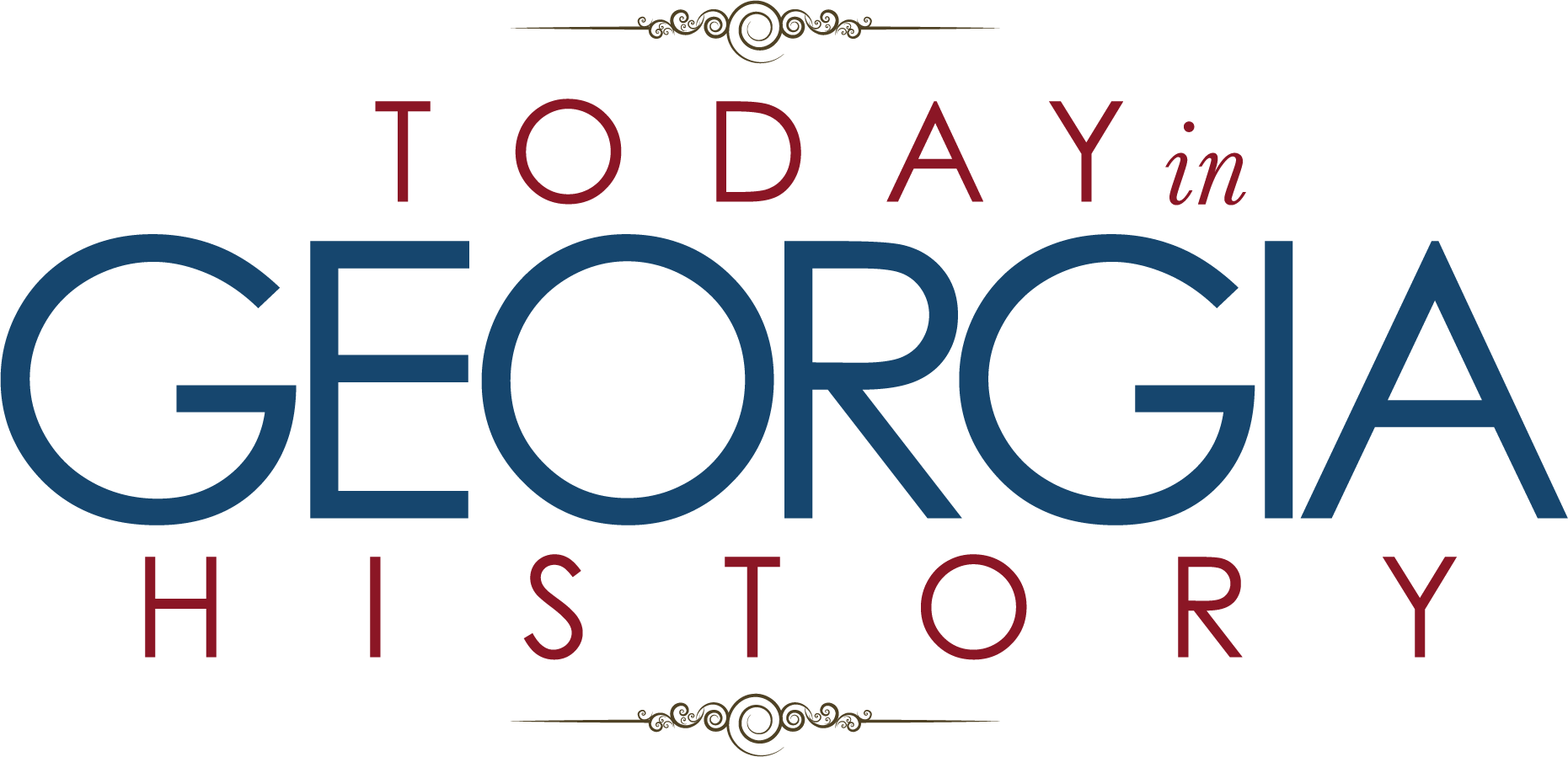Daily Activities – Dean Rusk
The daily activities created for each of the Today in Georgia History segments are designed to meet the Georgia Performance Standards for Reading Across the Curriculum, and Grade Eight: Georgia Studies. For each date, educators can choose from three optional activities differentiated for various levels of student ability. Each activity focuses on engaging the student in context specific vocabulary and improving the student’s ability to communicate about historical topics.
One suggestion is to use the Today in Georgia History video segments and daily activities as a “bell ringer” at the beginning of each class period. Using the same activity daily provides consistency and structure for the students and may help teachers utilize the first 15-20 minutes of class more effectively.
Optional Activities:
Level 1: Provide the students with the vocabulary list and have them use their textbook, a dictionary, or other teacher provided materials to define each term. After watching the video have the students write a complete sentence for each of the vocabulary terms. Student created sentences should reflect the meaning of the word based on the context of the video segment. Have students share a sampling of sentences as a way to check for understanding.
Level 2: Provide the students with the vocabulary list for that day’s segment before watching the video and have them guess the meaning of each word based on their previous knowledge. The teacher may choose to let the students work alone or in groups. After watching the video, have the students revise their definitions to better reflect the meaning of the words based on the context of the video. As a final step, have the students compare and contrast their definitions to their textbook, dictionary or other teacher provided materials definitions.
Level 3: Provide the students with the vocabulary list and have them use their textbook, a dictionary, or other teacher provided materials to define each term. After watching the video, have the students write a five sentence paragraph based on the provided writing prompts.
Vocabulary/Writing Prompts:
Architect
Appeasement
Tyranny
Worldview
Theater
Diplomatic
Cold War
Escalation
Writing Prompts
1. What was the policy of appeasement leading up to WWII? How would the failure of appeasement impact Dean Rusk’s views during the Cold War? In a five-sentence paragraph answer these two questions to help connect Dean Rusk’s experience during the lead up to WWII to his later views on foreign policy.
2. The video segment argues that the Cold War tested Dean Rusk’s diplomatic skills. In a five-sentence paragraph explain what the main foreign relation issues were during the Cold War and why it would be a difficult time to be Secretary of State.
3. Why do you think an anti-war movement started to grow during the Viet Nam war? In a five-sentence paragraph explain the impact all the conflicts of the Cold War including Korea and Vietnam had on the United States to help explain why there was a growing anti-war movement.
Related Georgia Performance Standards:
Reading Across the Curriculum (Grades 6-12)
SSRC1 Students will enhance reading in all curriculum areas by:
c. Building vocabulary knowledge
• Demonstrate an understanding of contextual vocabulary in various subjects.
• Use content vocabulary in writing and speaking.
• Explore understanding of new words found in subject area texts.
d. Establishing context
• Explore life experiences related to subject area content.
• Discuss in both writing and speaking how certain words are subject area related.
• Determine strategies for finding content and contextual meaning for unknown words.
Grade 8 Georgia Studies
SS8H9 The student will describe the impact of World War II on Georgia’s development economically, socially, and politically.
a. Describe the impact of events leading up to American involvement in World War II; include Lend-Lease and the bombing of Pearl Harbor.
b. Evaluate the importance of Bell Aircraft, military bases, the Savannah and Brunswick shipyards, Richard Russell, and Carl Vinson.
c. Explain the impact of the Holocaust on Georgians.
d. Discuss President Roosevelt’s ties to Georgia including his visits to Warm Springs and his impact on the state.
SS8H10 The student will evaluate key post-World War II developments of Georgia from 1945 to 1970.
a. Analyze the impact of the transformation of agriculture on Georgia’s growth.
b. Explain how the development of Atlanta, including the roles of mayors William B. Hartsfield and Ivan Allen, Jr., and major league sports, contributed to the growth of Georgia.
c. Discuss the impact of Ellis Arnall.
United States History, 9-12
SSUSH19 The student will identify the origins, major developments, and the domestic impact of World War II, especially the growth of the federal government.
a. Explain A. Philip Randolph’s proposed march on Washington, D.C., and President Franklin D. Roosevelt’s response.
b. Explain the Japanese attack on Pearl Harbor and the internment of Japanese- Americans, German-Americans, and Italian-Americans.
c. Explain major events; include the lend-lease program, the Battle of Midway, D-Day, and the fall of Berlin.
d. Describe war mobilization, as indicated by rationing, war-time conversion, and the role of women in war industries.
e. Describe the Manhattan Project at Los Alamos and the scientific, economic, and military implications of developing the atomic bomb.
f. Compare the geographic locations of the European Theater and the Pacific Theater and the difficulties the U.S. faced in delivering weapons, food, and medical supplies to troops.
SSUSH20 The student will analyze the domestic and international impact of the Cold War on the United States.
a. Describe the creation of the Marshall Plan, U.S. commitment to Europe, the Truman Doctrine, and the origins and implications of the containment policy.
b. Explain the impact of the new communist regime in China and the outbreak of the Korean War and how these events contributed to the rise of Senator Joseph McCarthy.
c. Describe the Cuban Revolution, the Bay of Pigs, and the Cuban missile crisis.
d. Describe the Vietnam War, the Tet Offensive, and growing opposition to the war.
e. Explain the role of geography on the U.S. containment policy, the Korean War, the Bay of Pigs, the Cuban missile crisis, and the Vietnam War.
World History, 9-12
SSWH18 The student will demonstrate an understanding of the global political, economic, and social impact of World War II.
a. Describe the major conflicts and outcomes; include Pearl Harbor, El-Alamein, Stalingrad, D-Day, Guadalcanal, the Philippines, and the end of the war in Europe and Asia.
b. Identify Nazi ideology, policies, and consequences that led to the Holocaust.
c. Explain the military and diplomatic negotiations between the leaders of Great Britain (Churchill), the Soviet Union (Stalin), and the United States (Roosevelt/Truman) from Teheran to Yalta and Potsdam and the impact on the nations of Eastern Europe.
d. Explain allied Post-World War II policies; include formation of the United Nations, the Marshall Plan for Europe, and MacArthur’s plan for Japan.
SSWH19 The student will demonstrate an understanding of the global social, economic, and political impact of the Cold War and decolonization from 1945 to 1989.
a. Analyze the revolutionary movements in India (Gandhi, Nehru), China (Mao Zedong, Chiang Kai-shek), and Ghana (Kwame Nkrumah).
b. Describe the formation of the state of Israel and the importance of geography in its development.
c. Explain the arms race; include development of the hydrogen bomb (1954) and SALT (Strategic Arms Limitation Treaty, 1972).
d. Compare and contrast the reforms of Khrushchev and Gorbachev.
e. Analyze efforts in the pursuit of freedom; include anti-apartheid, Tiananmen Square, and the fall of the Berlin Wall.



